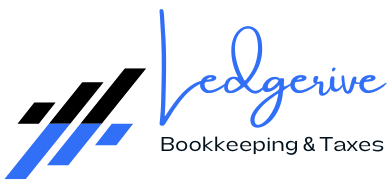Tax season can be a stressful time for many individuals and families. However, with proper planning and strategic decision-making, you can make the most out of your tax refund and maximize your financial resources. In this blog post guide, we will discuss nine ways to help you maximize your tax refund and secure your financial future.
1. Start Planning Early for Maximum Tax Savings
a. Begin Organizing Your Finances
One of the best ways to maximize your tax refund is to start planning early. Begin organizing your finances well before tax season begins. This includes gathering all necessary documents such as W-2s, 1099s, and receipts for deductions. By staying organized throughout the year, you can easily identify tax-saving opportunities and ensure that you are taking full advantage of available deductions and credits.
b. Consult with a Tax Professional
To make the most out of your tax refund, consider consulting with a tax professional. An experienced accountant or tax preparer can help you navigate the complex tax laws and identify potential tax savings. They can also provide valuable advice on maximizing your deductions and credits, ensuring that you receive the largest possible refund.
2. Take Advantage of Tax Deductions and Credits
a. Maximize Your Deductions
One of the most effective ways to maximize your tax refund is to take advantage of tax deductions. Deductions reduce your taxable income, which can result in a lower tax bill or a larger refund. Common deductions include mortgage interest, charitable contributions, and medical expenses. Make sure to keep detailed records of your expenses throughout the year to ensure that you can claim all eligible deductions.
b. Utilize Tax Credits
In addition to deductions, tax credits can also help maximize your tax refund. Unlike deductions, which reduce your taxable income, tax credits directly reduce the amount of tax you owe. Common tax credits include the Earned Income Tax Credit, Child Tax Credit, and Education Credits. Be sure to research available tax credits and see if you qualify to maximize your refund.
3. Contribute to Retirement Accounts
a: Contribute to a Traditional IRA or 401(k)
Contributing to retirement accounts is not only a smart long-term financial strategy but can also help maximize your tax refund. Contributions to traditional IRAs and 401(k) plans are tax-deductible, reducing your taxable income and potentially increasing your refund. Additionally, contributing to retirement accounts can help you save for the future and secure your financial stability in retirement.
b: Consider Roth IRA Contributions
If you are not eligible for a traditional IRA or 401(k), consider contributing to a Roth IRA. While Roth IRA contributions are not tax-deductible, qualified distributions are tax-free, providing tax benefits in the long run. By contributing to a Roth IRA, you can maximize your tax refund now and enjoy tax-free growth on your investments in the future.
4. Review Your Tax Withholding
One common misconception is that receiving a large tax refund is a good thing. In reality, a large refund means that you have been overpaying taxes throughout the year, giving the government an interest-free loan. To avoid overpaying taxes, consider adjusting your tax withholding. By withholding the right amount, you can maximize your take-home pay and use the extra funds to invest or save for the future.
5. Invest in Tax-Efficient Funds
When investing your tax refund, consider choosing tax-efficient funds. Tax-efficient investments are designed to minimize tax liability, allowing you to keep more of your investment returns. Examples of tax-efficient investments include index funds, exchange-traded funds (ETFs), and municipal bonds. By investing in tax-efficient funds, you can maximize your after-tax returns and grow your wealth over time.
6. Pay Down Debt
Another way to maximize your tax refund is to pay down debt. Prioritize high-interest debt such as credit cards or personal loans, as they can eat into your financial resources over time. By using your tax refund to pay down debt, you can save on interest charges and improve your financial health. Consider creating a debt repayment plan and allocate a portion of your refund towards reducing your debt burden.
7. Save for Emergencies and Future Goals
Finally, consider saving a portion of your tax refund for emergencies and future goals. Building an emergency fund can help you cover unexpected expenses without having to rely on credit cards or loans. Aim to save three to six months’ worth of living expenses in an easily accessible account. Additionally, consider saving for future goals such as a down payment on a house, education expenses, or retirement. By saving a portion of your tax refund, you can secure your financial future and achieve your long-term financial goals.
Conclusion:
Maximizing your tax refund requires careful planning and strategic decision-making. By following the nine tips outlined in this article, you can make the most out of your tax refund and secure your financial future.
Start planning early, take advantage of tax deductions and credits, contribute to retirement accounts, review your tax withholding, invest in tax-efficient funds, pay down debt, and save for emergencies and future goals. By implementing these strategies, you can maximize your tax refund and achieve financial stability.
